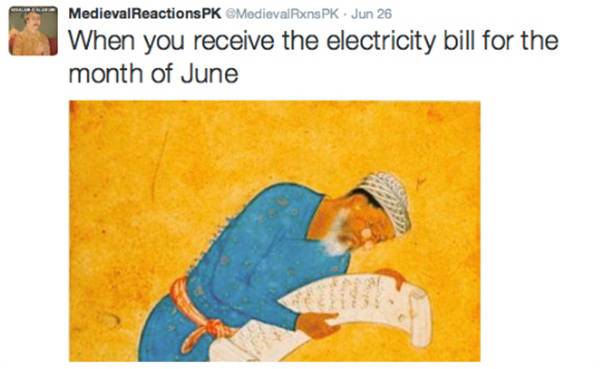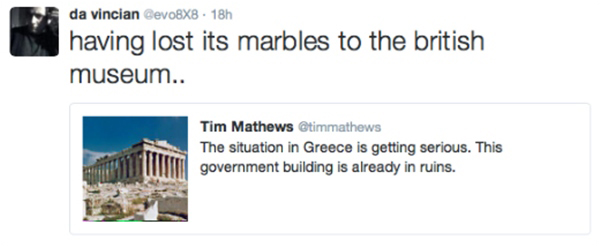
I am among the lucky Pakistanis who not only have the resources to travel, but can generally procure the visas needed with only a modicum of fuss. Over the years, I have been to dozens of cities around the world. However, I find that, once one achieves a certain degree of fame (or notoriety) as a television show host, one may be compelled to sacrifice one’s addiction to travel should “coordination” rear its ugly head.
Last week, however, I had the unique opportunity to mix business with pleasure. Omar Abdullah, the grandson of “Sher-e-Kashmir” Sheikh Abdullah and the son of Farooq Abdullah graciously agreed to let me interview him – his first interview for any Pakistani channel. I scheduled the meeting for Friday and filled in the visa forms required by the Indian embassy. Both my colleague Mehmal Sarfraz and I had applied for “journalist” visas and we were told that the vetting process was in the all-too-efficient hands of the babus in Delhi. A week later, there was still no sign of anything resembling a visa. On tenterhooks, I asked an Indian friend what the hell was wrong. “Arre, don’t worry. PM Modi is celebrating Yoga week and the entire bureaucracy is on yoga mats instead of at their desks. You guys will just have to wait.” Sighing at the thought that Pakistan and India have a work ethic in common too, I asked Omar Abdullah apologetically if we could postpone the interview by a week.



On Wednesday, we finally received our travel documents, which allowed us to cross the border on foot. With over half Lahore’s development budget having been spent on road networks (courtesy Chief Minister Shahbaz Sharif), it takes a mere 25 minutes to get from DHA to the Wahga border. So far, so good. Next step: immigration. Potentially, this can be the worst part of traveling between India and Pakistan. But people seem to know my face from TV and I am received warmly enough. On the downside, there was, of course, no electricity. “Please do try and get across to Khawaja Asif that people have to wait at the counters for hours,” said a harried customs official to me. “The generator installed on the border is so large we can’t afford the fuel. It’s absolutely useless!” he added, shaking his head in exasperation.
Fortunately, the officer in charge was kind enough to have the generator switched on while we waited. Both Mehmal and I – along with dozens of others sitting there like dying ducks – heaved a sigh of relief as we were issued clearance. We were lucky to get a bogy to cart us across to zero point, after which a 50-metre stretch of no-man’s-land separates one from “enemy territory”. As I crossed over, an imposing seven-foot-tall Dogra by the looks of it took my tiny passport in his giant hands and flipped through the pages. Most of the staff on either side of the border were either swatting away flies or dozing to combat the hot June sun. We were told to board a bus, which afforded us the luxury of an ancient fan as we were driven the short distance to the immigration office. At the counter, a young sardar cheerfully asked, “Ji Lahroon aye oh?” (coming from Lahore?) and stamped our passports.




Mehmal, who travels to India frequently for media junkets, greeted all the coolies and taxi drivers like old friends. As we came out, a flock of Sikh taxi drivers gathered around us, propelling us towards the nearest vehicle. Although air-conditioned, it was similar to riding in a Lahore rickshaw, but the driver, Shera, was a true sardar and kept up a steady stream of conversation.
As you cross the border, the first stop is “Pul Kanjraan” (the Bridge of Dancers). Kanjr is, of course, a popular term in rural Punjab used to describe the clan of dancers. Legend has it that the indomitable Maharaja Ranjit Singh was fond of a dancer named Mooran, a Punjabi beauty from the village of Makhanpura near Lahore. Once, she took leave from the darbar to visit her village, en route crossing a canal built by Emperor Shah Jahan that linked the Shalimar Gardens with the River Ravi. To her consternation, she lost her shoe in the canal. On her return, Mooran complained to the Maharaja of her trying journey and how badly Amritsar and Lahore needed a bridge. So beautiful (and clearly foresighted – Ed.) was she that Ranjit Singh could refuse her nothing: he ordered the bridge to be built, which later became a hub of trade and commerce between the two cities. Ranjit Singh himself would often camp on the Pul Kanjraan during his travels between Lahore and the Golden Temple.
As we reached the airport and Air India made ready to fly us to Delhi, I compared the city with Lahore. Delhi is greener, I grant you, but Lahore is cleaner and its traffic and roads are better. On the other hand, shopping in Delhi is wonderful fun and you are treated to the (rare in Lahore) sight of herds of foreigners roaming the streets. Three days of sheer entertainment and, of course, the enriching experience of meeting Omar Abdullah – an astute politician and a warm Kashmiri. I wish that travel between Lahore, Amritsar and Delhi could be made easier. It would be a giant leap forward for peace between the two countries.
The author can be reached at fawadch@hotmail.com
Last week, however, I had the unique opportunity to mix business with pleasure. Omar Abdullah, the grandson of “Sher-e-Kashmir” Sheikh Abdullah and the son of Farooq Abdullah graciously agreed to let me interview him – his first interview for any Pakistani channel. I scheduled the meeting for Friday and filled in the visa forms required by the Indian embassy. Both my colleague Mehmal Sarfraz and I had applied for “journalist” visas and we were told that the vetting process was in the all-too-efficient hands of the babus in Delhi. A week later, there was still no sign of anything resembling a visa. On tenterhooks, I asked an Indian friend what the hell was wrong. “Arre, don’t worry. PM Modi is celebrating Yoga week and the entire bureaucracy is on yoga mats instead of at their desks. You guys will just have to wait.” Sighing at the thought that Pakistan and India have a work ethic in common too, I asked Omar Abdullah apologetically if we could postpone the interview by a week.



"PM Modi is celebrating Yoga Week: the entire bureaucracy is on yoga mats instead of at their desks"
On Wednesday, we finally received our travel documents, which allowed us to cross the border on foot. With over half Lahore’s development budget having been spent on road networks (courtesy Chief Minister Shahbaz Sharif), it takes a mere 25 minutes to get from DHA to the Wahga border. So far, so good. Next step: immigration. Potentially, this can be the worst part of traveling between India and Pakistan. But people seem to know my face from TV and I am received warmly enough. On the downside, there was, of course, no electricity. “Please do try and get across to Khawaja Asif that people have to wait at the counters for hours,” said a harried customs official to me. “The generator installed on the border is so large we can’t afford the fuel. It’s absolutely useless!” he added, shaking his head in exasperation.
Fortunately, the officer in charge was kind enough to have the generator switched on while we waited. Both Mehmal and I – along with dozens of others sitting there like dying ducks – heaved a sigh of relief as we were issued clearance. We were lucky to get a bogy to cart us across to zero point, after which a 50-metre stretch of no-man’s-land separates one from “enemy territory”. As I crossed over, an imposing seven-foot-tall Dogra by the looks of it took my tiny passport in his giant hands and flipped through the pages. Most of the staff on either side of the border were either swatting away flies or dozing to combat the hot June sun. We were told to board a bus, which afforded us the luxury of an ancient fan as we were driven the short distance to the immigration office. At the counter, a young sardar cheerfully asked, “Ji Lahroon aye oh?” (coming from Lahore?) and stamped our passports.




Mehmal, who travels to India frequently for media junkets, greeted all the coolies and taxi drivers like old friends. As we came out, a flock of Sikh taxi drivers gathered around us, propelling us towards the nearest vehicle. Although air-conditioned, it was similar to riding in a Lahore rickshaw, but the driver, Shera, was a true sardar and kept up a steady stream of conversation.
As you cross the border, the first stop is “Pul Kanjraan” (the Bridge of Dancers). Kanjr is, of course, a popular term in rural Punjab used to describe the clan of dancers. Legend has it that the indomitable Maharaja Ranjit Singh was fond of a dancer named Mooran, a Punjabi beauty from the village of Makhanpura near Lahore. Once, she took leave from the darbar to visit her village, en route crossing a canal built by Emperor Shah Jahan that linked the Shalimar Gardens with the River Ravi. To her consternation, she lost her shoe in the canal. On her return, Mooran complained to the Maharaja of her trying journey and how badly Amritsar and Lahore needed a bridge. So beautiful (and clearly foresighted – Ed.) was she that Ranjit Singh could refuse her nothing: he ordered the bridge to be built, which later became a hub of trade and commerce between the two cities. Ranjit Singh himself would often camp on the Pul Kanjraan during his travels between Lahore and the Golden Temple.
As we reached the airport and Air India made ready to fly us to Delhi, I compared the city with Lahore. Delhi is greener, I grant you, but Lahore is cleaner and its traffic and roads are better. On the other hand, shopping in Delhi is wonderful fun and you are treated to the (rare in Lahore) sight of herds of foreigners roaming the streets. Three days of sheer entertainment and, of course, the enriching experience of meeting Omar Abdullah – an astute politician and a warm Kashmiri. I wish that travel between Lahore, Amritsar and Delhi could be made easier. It would be a giant leap forward for peace between the two countries.
The author can be reached at fawadch@hotmail.com

